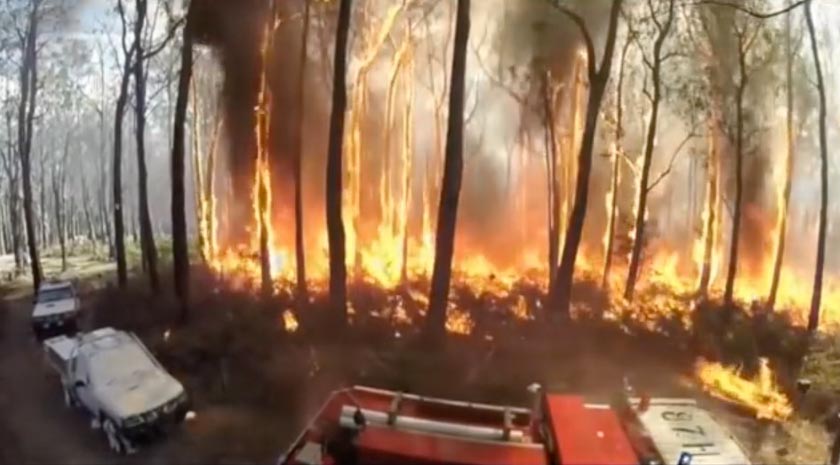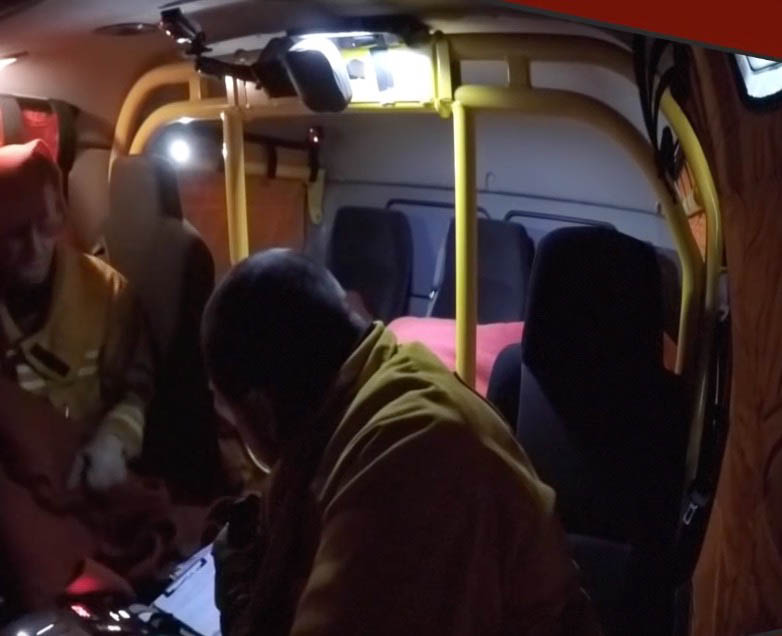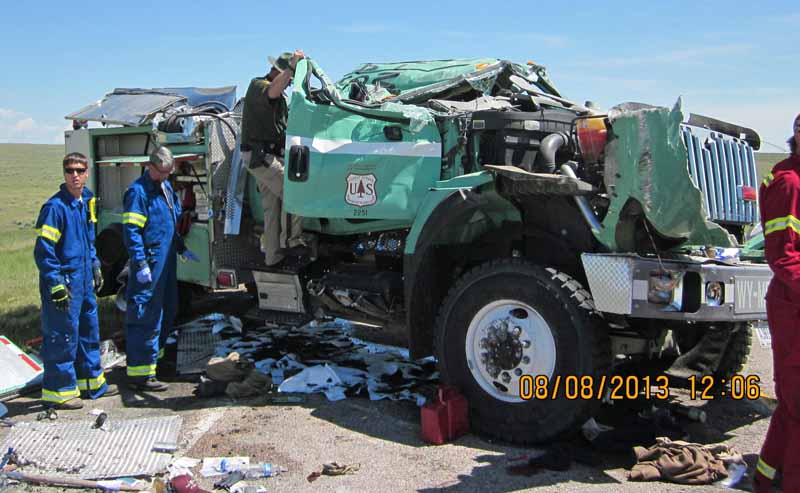Above: Country Fire Authority test of engine burnover protection systems. Screen shot from CFA video.
The Aussies are far ahead of wildland firefighting agencies in the United States when it comes to the protection of personnel during fire engine burnovers and rollovers. Since 1977 Victoria’s Country Fire Authority (CFA) has been creating, evolving, and improving systems to increase the odds of firefighters on an engine surviving if their position is overrun by fire. These efforts were intensified after two engine burnovers in 1983 and 1998 killed a total of 17 firefighters.
During the last 39 years the vehicles have been hardened in various ways. Examples include internal radiant heat curtains and nozzles positioned around the exterior of the truck that spray water as the fire approaches.
We did a quick search on Wildfire Today for “engine burnover” and were surprised at the number of results. Take a moment and at least look at the titles and brief excerpts. These, of course, are just articles on our website. We make no claim that all engine burnovers are included since we started this website in 2008.
On November 21 the CFA posted a video (below) about their crew protection systems. It covers the history of their efforts and several minutes of video recorded during a test when a fire was ignited that burned over three of their engines to evaluate the effectiveness of the designs. The maximum temperature recorded was 728°C (1,342°F)
Below is a screen shot from the CFA video.

What if — in 2006 the five U.S. Forest Service firefighters that were entrapped and killed on the Esperanza Fire, instead of working on an engine similar to the USFS engine farther down this page, had been assigned to one built to CFA standards. Would they have taken refuge in the engine, pulled down the thermal protection shields and turned on the truck protection water spray instead of attempting to survive the fire outside the engine?
One feature of the CFA engines we noticed was a heavy-duty internal roll bar.

We have written before about the need for U.S. wildland firefighting agencies to improve the survivability of engine crews during rollovers. These accidents involving large fire trucks, especially water tenders, are common.
In our opinion it is disgraceful that the outfits employing thousands of firefighters on engines have not taken this step to provide a safer working environment for their personnel.
The photo below is from one of the 34 articles on Wildfire Today tagged “rollover”.

Thanks and a tip of the hat go out to Cameron.


As a nation that often looks to technology as the way to solve problems it is surprising that active protection systems have received little notice in the US. The cost is likely a factor but probably not the main one. New appuratus is already hideously expensive so adding these systems would likely only marginally impact pricing. I bet it’s more a matter of doctrine. We in the US are just not supposed to be entrapped ever and if we are it’s assumed we’ll be on foot. In Australia the engine seems to be the prime peice to the suppression puzzle where in federal service (mainly forest service, deriving solely from my experience) hand crews and aviation resources seem to dominate thinking more. The systems in these videos seem perfect for the types of fires the BLM engines face on a routine basis. I also agree with Bill that it is ridiculous that we don’t have scrollbars in our apparatus as standard. Rollovers are a common hazard and kill and injure firefighters all the time. Maybe the thinking is we are just supposed to be perfect drivers all the time even when the objective hazards are really high? You know just like there should never be any burnovers because our training and judgement should always on point and correct despite sleep deprivation poor nutrition, smoke inhalation, the fog of war and every other factor that mucks things up on the fireline? When good technology exists that can save lives we should have it and use it when necessary.